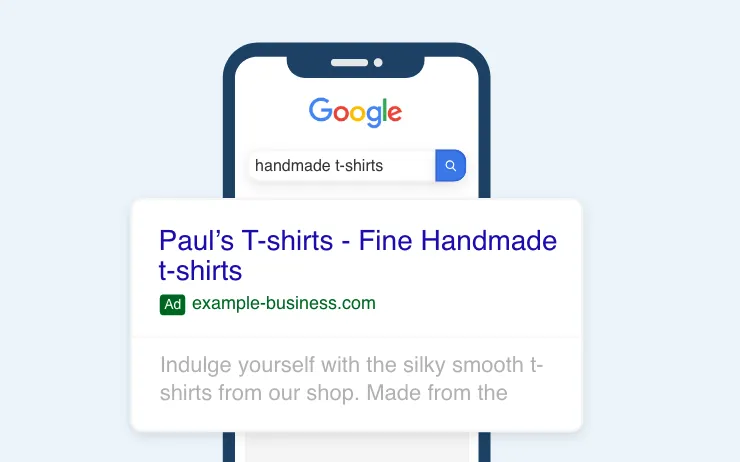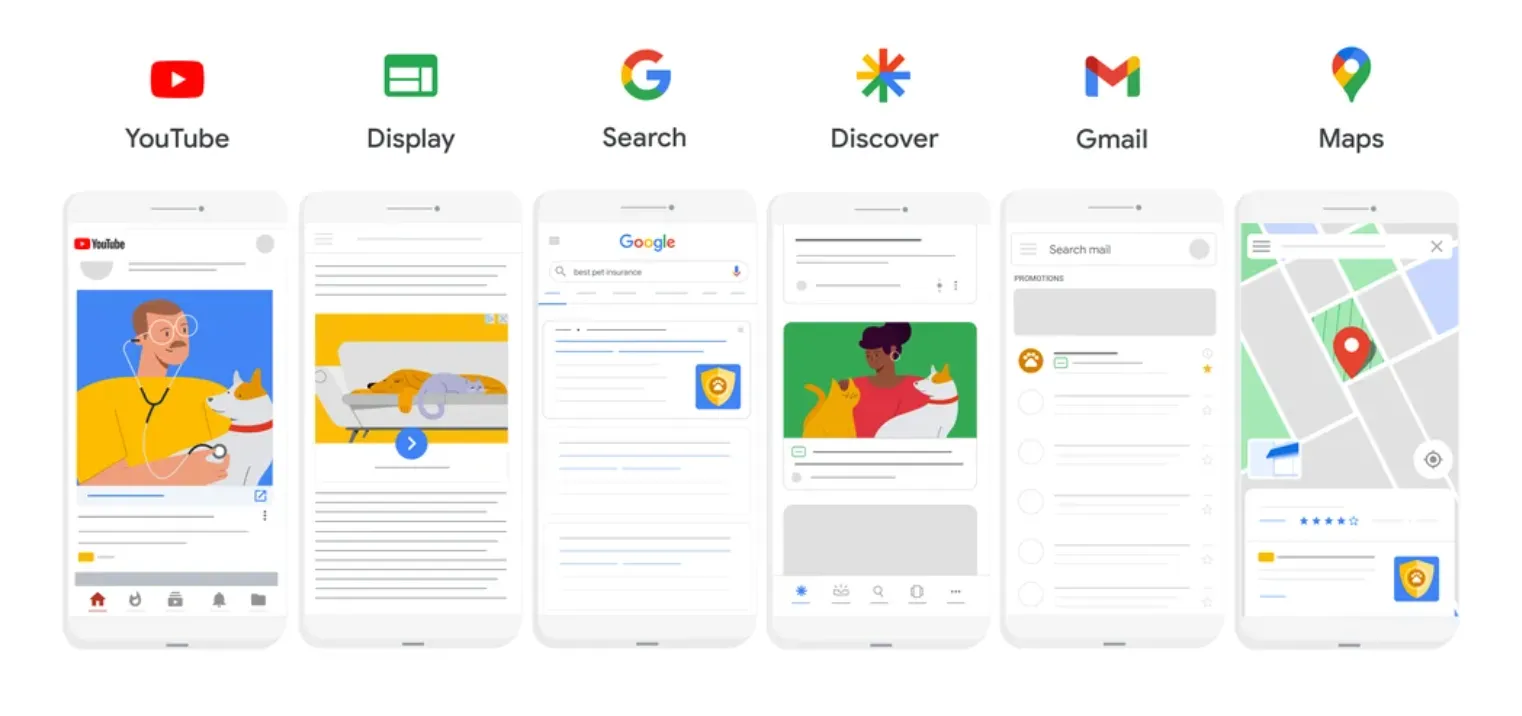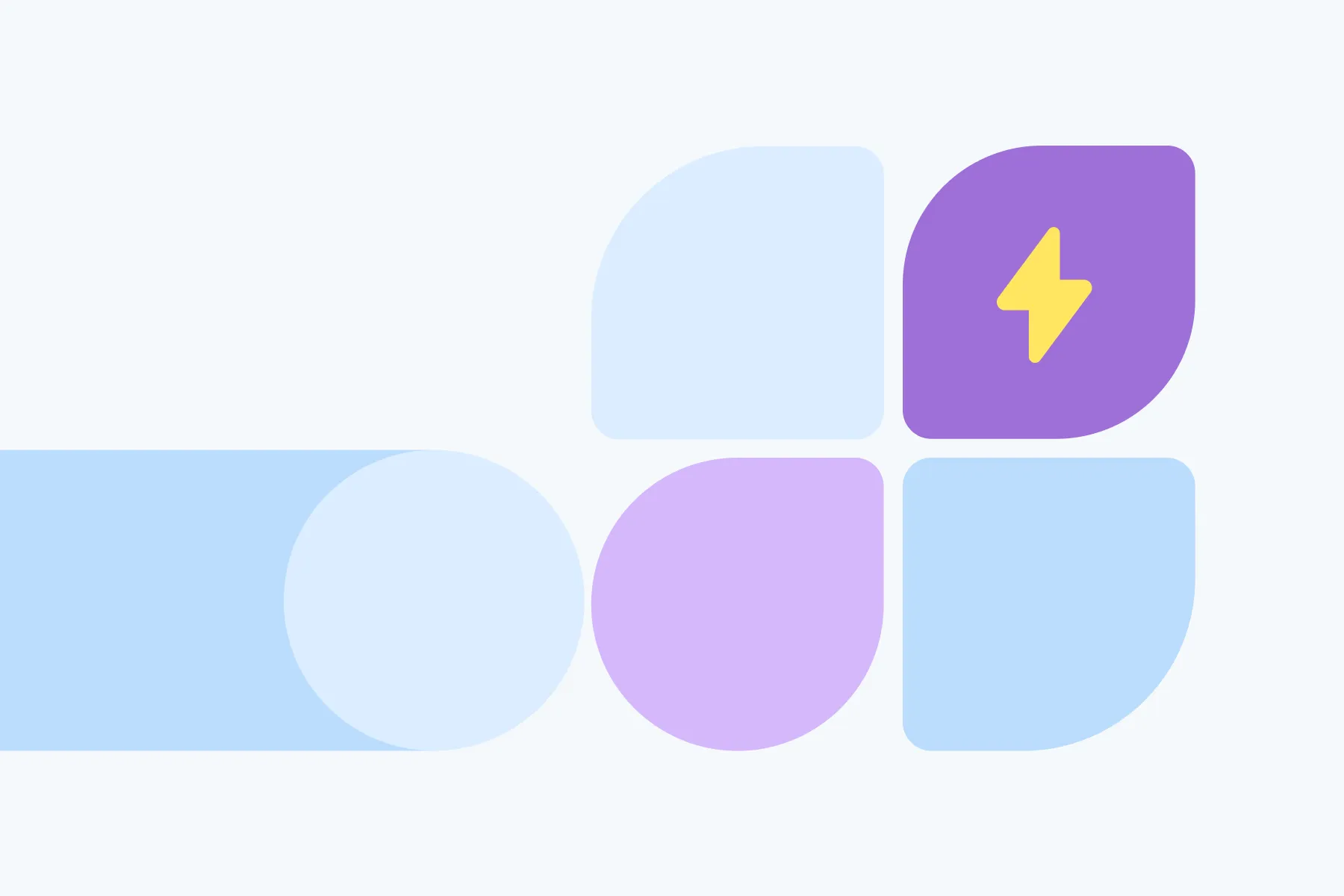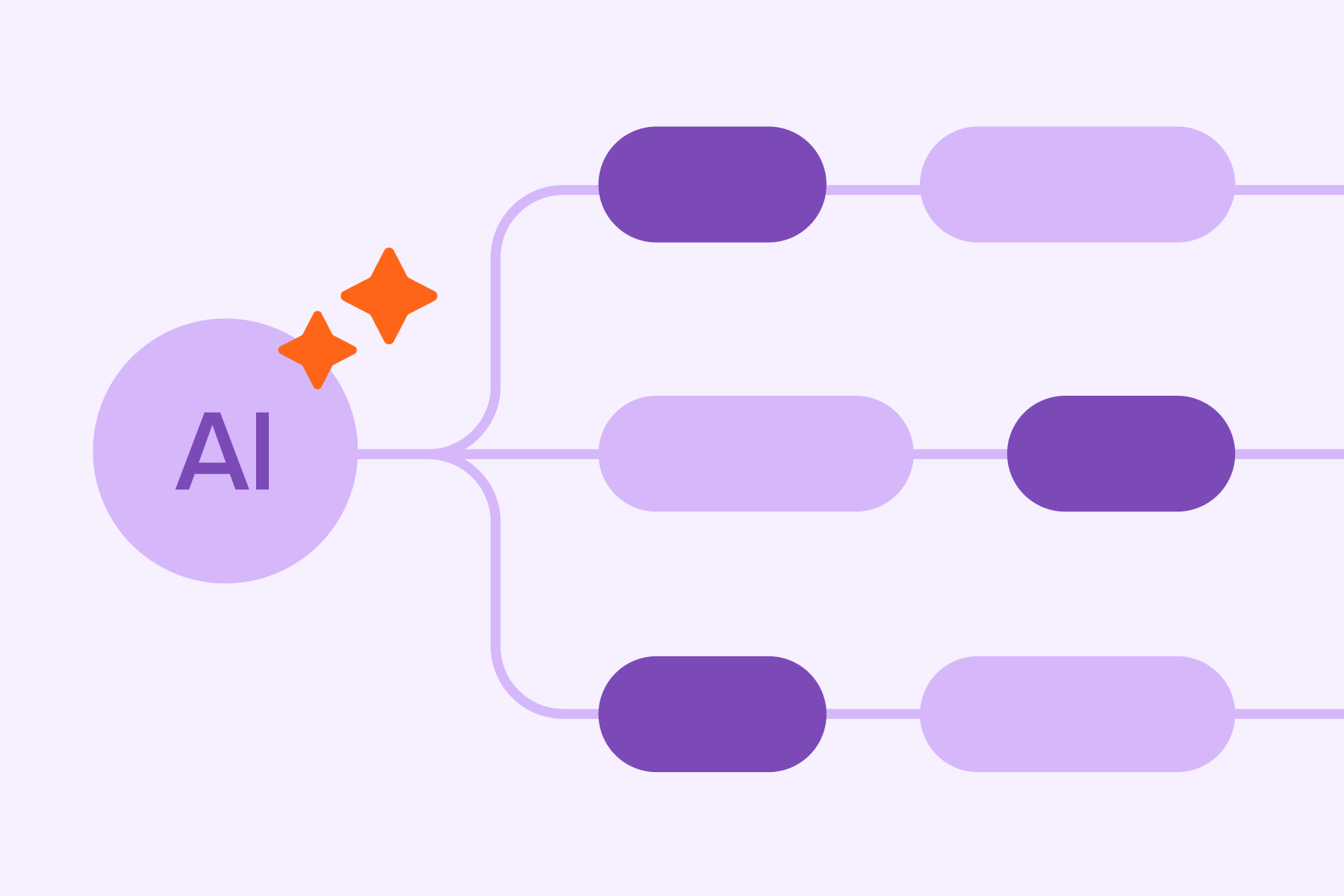Google PMax vs Search vs Display: 2025 SaaS Cost Guide

If you're running paid media for a SaaS brand in 2025, chances are you’ve bumped into a tricky question: Where should our next dollar go: Google PMax, Search, or Display?
Each channel promises reach, efficiency, and ROI. But the way they deliver? Totally different.
We’ve seen teams pour thousands into Performance Max expecting magic, only to end up with vague results. Others cling to Search like it’s 2015, ignoring that CPCs have quietly crept up past $3 in some verticals. And Display? It’s either a brilliant remarketing engine or a money pit - depending on how you set it up.
That’s why we put this guide together: to give SaaS marketers a clear, practical, side-by-side cost breakdown of Google PMax vs Search vs Display. No hypotheticals, just actual numbers, trends, and trade-offs based on what’s happening inside real accounts.
So if you're trying to lower CAC, improve ROAS, or just stop flying blind, keep reading.
Google Search Ads: SaaS Cost Breakdown

Search is still the workhorse of paid acquisition, especially for SaaS. You bid on intent, show up at the right moment, and drive action. But in 2025, Google Search isn’t what it used to be.
How Search works in SaaS now
It’s high-intent, high-control, but increasingly high-cost. You’re not just competing on keywords, you’re bidding against well-funded brands, VC-backed players, and AI-written ads that blend into the SERP.
In this climate, what you bid on- and how you structure your campaigns - matters more than ever.
Where Search shines
- Branded search - Show up when people search your company name. These users already know you and are often ready to book a demo or sign up.
- Competitor campaigns - Target users searching for alternatives to your competitors. Great for reaching people actively comparing tools.
- Feature/solution keywords - Bid on specific needs like “CRM with reporting” or “SOC 2 compliant CMS.” These are high-intent searches from buyers who know what they want.
With the right funnel and LP alignment, these campaigns drive predictable, pipeline-generating traffic.
CPC, CTR, CR, CPL - What’s behind the numbers?
Here’s how Search performs for B2B SaaS in 2025, and what those numbers actually mean in context:
- CPC = $3.33
→ You’re paying for access to high-intent buyers. The more niche your market, the more expensive the clicks. - CTR = 2.41%
→ Solid if your ad copy is tightly aligned with the keyword. Generic messaging? Expect lower engagement. - CR = 3.04%
→ This reflects strong intent, but conversion depends heavily on your landing page clarity and offer relevance. - CPL = $116
→ High, yes - but if it turns into a sales-qualified lead or booked demo, it can be well worth the spend.
Optimizing Google Search Ads in 2025
- Mix branded, competitor, and feature keywords. This balances cost, scale, and lead quality.
- Use Dynamic Search Ads carefully. Only run them with exclusions and tight landing page controls.
- Optimize for efficient conversions. Don’t chase clicks, chase qualified leads that convert affordably.
- Audit branded spend often. You might be paying for traffic you’d get from organic search anyway.
Google Display Ads: SaaS Cost Breakdown

Display is often misunderstood in SaaS: some see it as cheap awareness, others write it off entirely. But when used strategically - especially for remarketing and mid-funnel nurture - it can quietly drive real results.
How Display works in SaaS now
In 2025, Display isn’t about spraying banner ads across the internet. It’s about layered audience targeting, intent-based remarketing, and using visual storytelling to stay top-of-mind during long sales cycles.
But results depend heavily on context. If you're just blasting static ads to cold audiences with no segmentation, performance will suffer fast.
Where Display shines
- Retargeting site visitors - Keep your brand warm while prospects compare options or stall in the decision process.
- Mid-funnel nurture - Reinforce product value through visuals, social proof, and educational content.
- In-market & lookalike audiences - Reach people who fit your ICP but haven’t hit your site yet.
For SaaS, Display works best when paired with strong creative and a clear next step: demo, guide, pricing page.
CPC, CTR, CR, CPL - What’s behind the numbers?
Display tends to be cheaper - but that doesn’t always mean more efficient. Here’s what the numbers look like for B2B SaaS:
- CPC = $0.79
→ Clicks are cheap, but not always qualified. Display is great for visibility, not direct intent. - CTR = 0.46%
→ Display ads don’t get a lot of clicks - and that’s normal. You’re showing up in passive contexts like news or blogs. - CR = 0.80%
→ Most people won’t convert on first click. That’s why Display works best for retargeting or soft CTAs like guides or webinars. - CPL = $130
→ Cost per lead can feel high - but if you’re retargeting the right people, it can still deliver strong ROI over time.
Optimizing Google Display Ads in 2025
- Start with retargeting. It’s where Display delivers the most value in SaaS - reminding, not introducing.
- Tailor creative by funnel stage. Use static banners for warm leads, GIFs or video for mid-funnel education.
- Segment audiences clearly. Don’t mix pricing page visitors with blog readers - match message to behavior.
- Avoid sending traffic to homepages. Drive clicks to focused, single-intent landing pages.
- Layer your targeting. Combine audiences, placements, and topics to improve quality and avoid waste.
- Track assisted impact. Many Display touches won’t convert directly - look at view-through and multi-touch attribution.
Google PMax Campaigns: SaaS Cost Breakdown

Performance Max was built to simplify Google Ads. One campaign. All placements. Maximum reach. But in SaaS, especially B2B, simplicity can come at a cost.
Instead of targeting keywords or audiences directly, PMax runs across Google Search, Display, YouTube, Gmail, Discover, and Maps based on your goals and conversion signals. That means you’re giving Google the steering wheel, and while it can drive growth, it can also steer you into vague, expensive territory if your inputs aren’t solid.
We’ve seen PMax work brilliantly for SaaS brands with strong conversion tracking, segment-specific assets (including video), and well-structured trial/demo offers. But for teams without that infrastructure, PMax often delivers high impression volume and ambiguous lead quality, especially when it leans heavily into YouTube and Display.
Cost per Click (CPC)
Since PMax blends both high-intent Search and broad Display inventory, CPCs tend to fall between those channels.
- Search CPC (B2B SaaS) ≈ $3.33
- Display CPC (B2B SaaS) ≈ $0.79
- 👉 PMax CPC typically falls in the $2-4 range, depending on how much budget Google allocates to search-style placements versus display-heavy reach.
Click‑Through Rate (CTR)
CTR is another blended signal. Search placements typically earn much higher click rates than Display, so where PMax leans heavily determines your result.
- Search CTR (general) ≈ 2.41%
- Display CTR (general) ≈ 0.46%
- 👉 PMax CTR tends to land in the 1-2% range for SaaS, reflecting a mix of mid- and bottom-funnel intent.
Conversion Rate (CR)
PMax’s biggest advantage - and risk - is its opacity. It can pull strong CR from search, or drop to display-like lows, depending on structure.
- Search CR (B2B SaaS) = 3.04%
- Display CR (B2B SaaS) ≈ 0.80%
- 👉 PMax CR usually ranges between 1-3%, especially in demo or trial acquisition funnels. Creative, audience signals, and asset grouping make a huge difference here.
Cost per Lead (CPL)
This is where Performance Max shows its true ROI potential - or its gaps. You’re buying automation and blended reach, but without strong conversion signals and tight funnel alignment, PMax can easily overspend on low-intent leads.
- Search CPL (B2B SaaS) ≈ $116, it’s higher than average due to competitive keywords and stricter lead quality filters
- Display CPL (B2B SaaS) ≈ $130
- 👉 Performance Max CPL (B2B SaaS) typically sits between $100-120 per demo or trial lead, assuming clean conversion tracking and well-structured campaign goals.
In accounts where setup is strong - segmented asset groups, first-party signals, clear conversions - PMax can outperform Display and approach Search efficiency. But if Google leans into YouTube or Discovery too early, CPLs rise fast with little pipeline return.
Optimizing Google PMax in 2025
- Don’t launch PMax blindly. Start with a small, controlled budget. Monitor what placements are driving conversions and cut low-performers early.
- Use segmented asset groups. Separate messaging for ICPs, funnel stages, or product lines gives the algorithm better direction.
- Feed it clean signals. Upload first-party audiences, use value-based conversions, and avoid over-relying on smart bidding if tracking isn’t solid.
- Watch placement mix. PMax doesn’t just run on Search - it may push spend into YouTube or Discovery. Check Insights reports and trim fat regularly.
- Layer in intent. Add URL expansion controls and negative keywords via account-level settings to nudge Google toward higher-quality traffic.
- Don’t set and forget. PMax learns fast, but it also plateaus. Refresh creative every 4-6 weeks to avoid performance drops.
Side-by-side comparison: Google PMax vs Search vs Display for SaaS
Sometimes you just need the numbers. Here’s how Google PMax, Search, and Display stack up for B2B SaaS in 2025:
.webp)
These numbers aren’t definitive, they’re directional. Costs and performance vary widely depending on funnel structure, audience quality, creative, and how well your tracking setup is built.
But if you’re deciding where to put your next $10K of paid budget, this breakdown offers a clear starting point.
❓FAQ
What is Google PMax?
Google Performance Max (PMax) is a goal-based campaign type that runs across all Google inventory: Search, Display, YouTube, Discover, Maps, and Gmail. It uses machine learning to optimize for your selected conversion goal.
Where does Google PMax show?
PMax ads appear across Google’s full ecosystem: including search results, display placements, YouTube videos, shopping listings, and Gmail. You don’t choose placements manually, Google allocates based on performance signals.
How to optimize Google PMax for better ROAS?
Use clearly defined conversion goals, strong audience signals, and segmented asset groups. Regularly review asset performance, exclude underperforming placements, and ensure conversion tracking is accurate.
What are Google Search Ads?
Search Ads are text-based ads triggered by keywords people enter into Google. They’re intent-driven and appear on the search engine results page (SERP), making them ideal for high-intent SaaS queries.
How to optimize a Google Search Ads campaign?
Refine keyword match types, group ads by intent, write clear ad copy with strong CTAs, and direct clicks to tightly matched landing pages. Monitor search term reports and adjust bids based on performance.
What are search terms in Google Ads?
Search terms are the actual words users typed into Google before clicking your ad. Reviewing them helps refine targeting, add negative keywords, and improve relevance.
What are Google Display Ads?
Display Ads are visual banners shown across the Google Display Network - millions of websites, apps, and Google-owned platforms. They’re designed for awareness, retargeting, and mid-funnel engagement.
Where do Google Display Ads appear?
Display Ads appear on websites that are part of the Google Display Network, YouTube, mobile apps, and Gmail. Placement is based on audience targeting, topics, and contextual signals.
What two types of remarketing can be used on Google Display Ads?
- Standard remarketing - Shows ads to past visitors as they browse sites and apps.
- Dynamic remarketing - Displays personalized ads with specific content or products users viewed on your site.
Takeaways
- Search drives qualified leads, but at a high CPL. Use it for bottom-funnel keywords, and monitor branded spend closely.
- Display is best for retargeting and nurturing. Avoid cold traffic unless you're driving to specific, low-friction offers.
- PMax requires structure. Without clean goals and segmented assets, it leans into low-intent placements and weak results.
- CPC alone means nothing. Evaluate channels based on full-funnel efficiency: CPL, conversion rate, and lead quality.
- Test incrementally. Add PMax or Display in layers, don’t shift budget all at once without seeing what moves pipeline.
- Track everything. Inaccurate conversion data leads to poor optimization and wasted budget.
- No channel scales in isolation. The most effective SaaS ad strategies use a mix: Search to convert, Display to reinforce, PMax to expand.
Work with Aimers
Running PMax on autopilot? Search bleeding budget? Display doing… nothing?
We help SaaS teams turn clicks into real pipeline by building campaigns that know who they’re for and why they convert.
Talk to us - and let’s rebuild your ROI, channel by channel.











